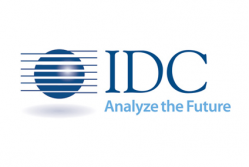Volumes dropped by nearly 5% in the EMEA smartphone market in the third quarter compared with the same quarter in 2017, but market value was up more than 10% over the year, according to International Data Corporation’s (IDC) Quarterly Mobile Phone Tracker. Total market volumes were 89 million for a value of $29.8 billion at retail prices before sales taxes.
The strong performance masked marked regional variations, said Simon Baker, a program director for mobile devices at IDC EMEA. The Middle East and Africa market slumped both in volumes and value, he said, with the slump in oil prices adding to declining exchange rates in many countries. Meanwhile Europe performed strongly, both in the West and in Central Europe; further East the Russian market showed continuing vitality.
In value terms the core European market (the EU, the EEA, and Switzerland) was worth nearly a quarter more than in 3Q17, approaching $19 billion at retail prices before sales tax and VAT. Baker said that while there is a trend toward more expensive smartphones in most countries around the world as people use them more, the rise is more emphatic in Europe than anywhere else except the U.S., despite the relatively sluggish economic environment across most of Europe.
The value strength in the third quarter was not driven by Apple, as its new XS model was only available in the final days of the quarter and the XR launch date after the quarter end. According to Marta Pinto, a senior research analyst at IDC EMEA, much of the increase was due to the success of Huawei in moving up market and becoming a close competitor of Samsung in the middle and upper middle reaches of the market. Huawei’s P20 line, launched in the spring, did well in both its cheaper Lite and most expensive Pro versions as well as the standard model. In unit share in 3Q Huawei bested Samsung in six of the 23 country markets IDC breaks out in its Mobile Phone Tracker across Europe, the same number as in 2Q, though the countries were not all the same.
In the past year Huawei has almost doubled the proportion of its smartphone revenues in Europe from smartphones worth over $200. This is quite an achievement, said Baker, as a new competitor in the market normally looks to gain inroads by undercutting more established rivals in price. Europe is a key target market for Huawei and already accounts for nearly half of its total smartphone exports. Effectively closed out of the smartphone market in the U.S., Huawei has little more than a third of Samsung’s global revenues from exports outside its home market, according to IDC’s tracker. Huawei makes nearly half of its smartphone revenues at home in China, while Samsung made less than 10% of smartphone turnover in its much smaller home market of South Korea and is much more of a global enterprise. In Europe, however, Huawei was already up to around two-thirds of Samsung’s $5.3 billion smartphone income in the third quarter. Overall Europe accounts for around a sixth of the value of global smartphone sales. “Huawei is progressively building its way to the top in numerous geographies,” said Pinto.
Xiaomi is a more conventional new competitor in Europe to date as it mainly sells cheaper smartphone models and undercuts the prices of the brands it is aiming to supplant. It did not increase share in Europe in the third quarter. Xiaomi will be buoyed in the fourth quarter by its recent launch in the U.K., said Pinto. The key runup to the holiday season will be very interesting, she said, as the competition will only increase, with Huawei having launched its new premium Mate 20 model in October.
Top 5 Smartphone Companies, EMEA Shipments, Market Share, and Year-Over-Year Growth, Third-Quarter 2018 (Units in Millions)
|
Company |
3Q18 Unit Shipments |
3Q18 Market Share |
3Q17 Unit Shipments |
3Q17 Market Share |
Year-Over-Year Growth |
|
1. Samsung |
26.8 |
30.1% |
31.4 |
33.6% |
-14.6% |
|
2. Huawei |
17.2 |
19.3% |
11.1 |
11.9% |
55.0% |
|
3. Apple |
12.5 |
14.0% |
13.3 |
14.2% |
-6.0% |
|
4. Transsion |
7.9 |
8.9% |
6.6 |
7.1% |
19.7% |
|
5. Xiaomi |
4.4 |
4.9% |
1.9 |
2.0% |
131.6% |
|
Others |
20.2 |
22.7% |
29.2 |
31.2 % |
-30.8% |
|
Total |
89.0 |
100% |
93.5 |
100.0% |
-4.8% |
Source: IDC Quarterly Mobile Phone Tracker, November 7, 2018
IDC’s Quarterly Mobile Phone Tracker follows more than 110 phone makers across the EMEA region, providing detailed shipment volumes, average selling prices (ASPs), and market values for each firm and country.
For more information on IDC’s Quarterly Mobile Phone Tracker or other IDC research services, please contact Vice President Karine Paoli on +44 (0) 20 8987 7218 or at [email protected]. Alternatively, contact your local IDC office or visit www.idc.com.

